Patterns of Behaviour (2023) brings together three series of images – In Retrospect, In Return and In Good Faith. The works revolve around the question of how patterns can be recognised, broken and retold – visually and narratively. The starting point is a growing photo archive from which fragments of images are extracted, structured and assembled in series. Digital inserts, graphic overlays and a final manual overpainting create multi-layered compositions between abstraction and legibility.
The three series are based on dramaturgical principles from music, theatre and streaming culture – and examine the tension between repetition, variation and meaning.
Patterns of Behaviour sees itself as a visual experiment: about perception and narrative, about structure and disruption – and about the possibility of taking images seriously as thinking actors.
In retrospect – November 2021
In „In Retrospec“t, the principle of the narrative series is translated into a visual format: nine seasons of 16 episodes each follow a clear graphic grid. Each season image is divided into 4×4 fields, with image motifs developing over three episodes – similar to recurring characters in narrative formats.
Diagonal masks break up the horizontal narrative principle and create visual counterpoints. Thematically, the series revolves around shifts in perspective: Proximity meets distance, top view meets bottom view. The subsequent sheets arise from the re-composition of these grids – new image sections, new tensions.
The website shows four of the total of nine season scripts. The complete series with all the scripts and the newly assembled trailers is documented in the book Behavior Patterns – available in the shop.
The large-format season panels appear as digital prints on non-woven paper (200×200cm), as prints behind acrylic glass (80×80cm) or on paper (40×40cm). The 144 individual sheets – each 40×40cm – are hung as a block; 16 each make up a trailer.
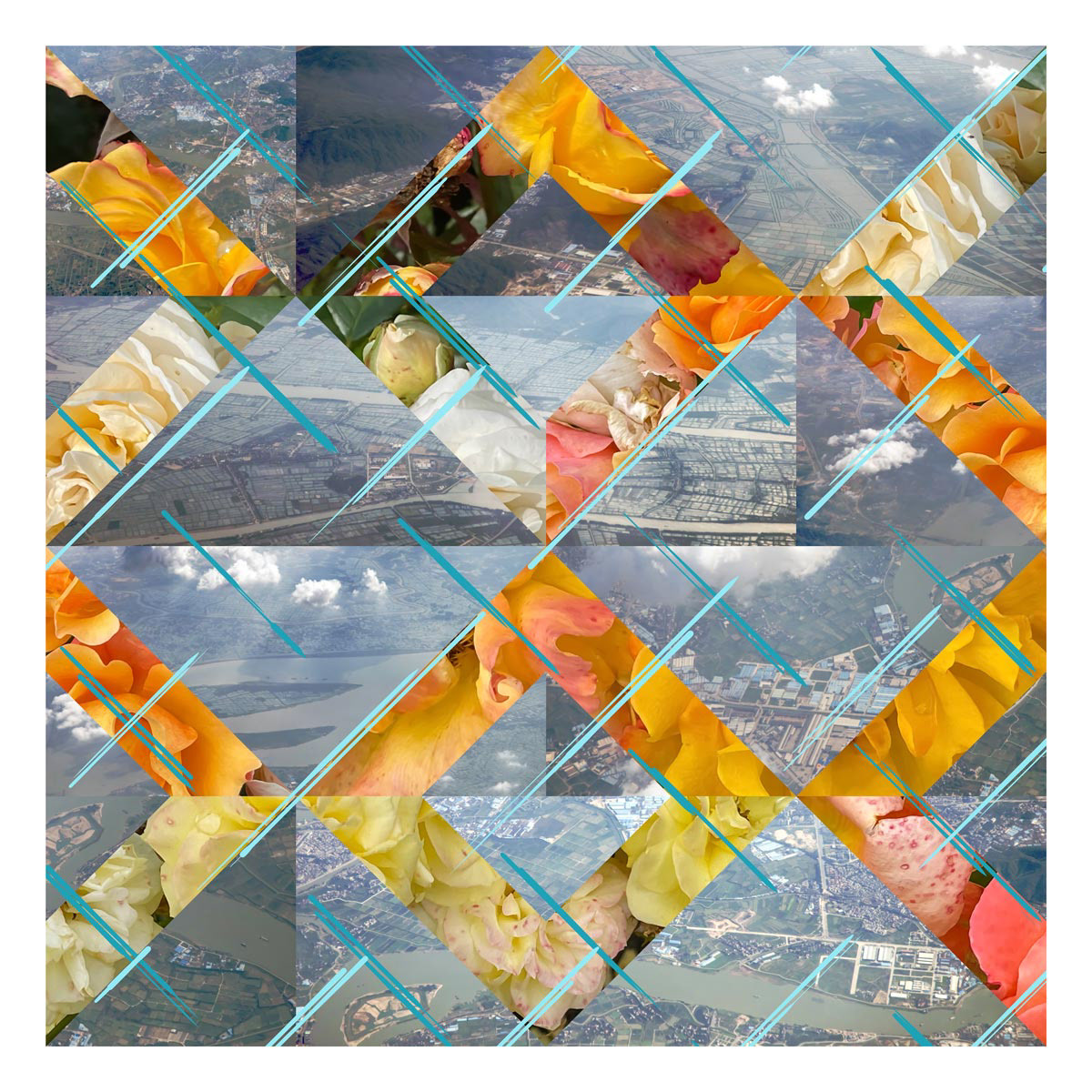
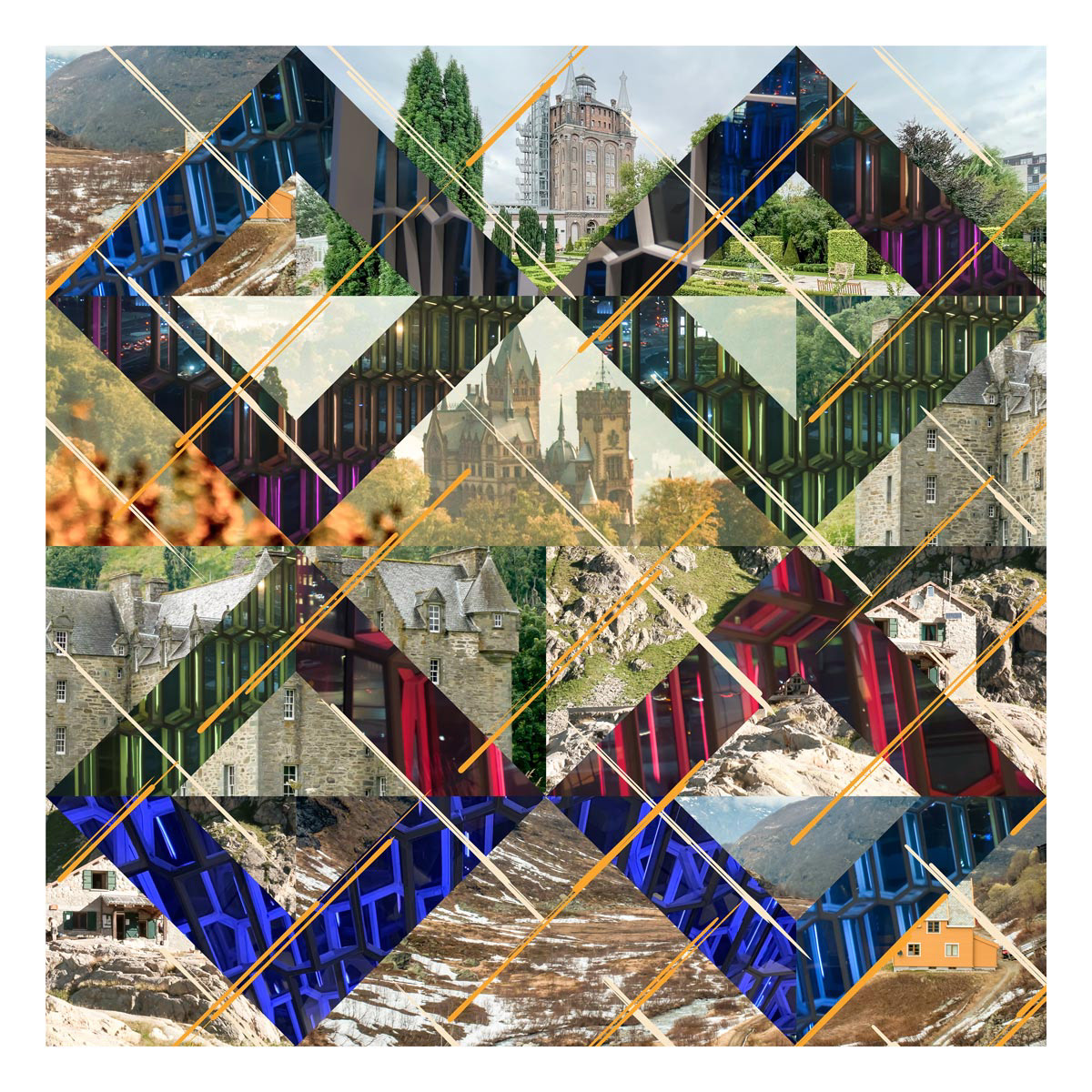
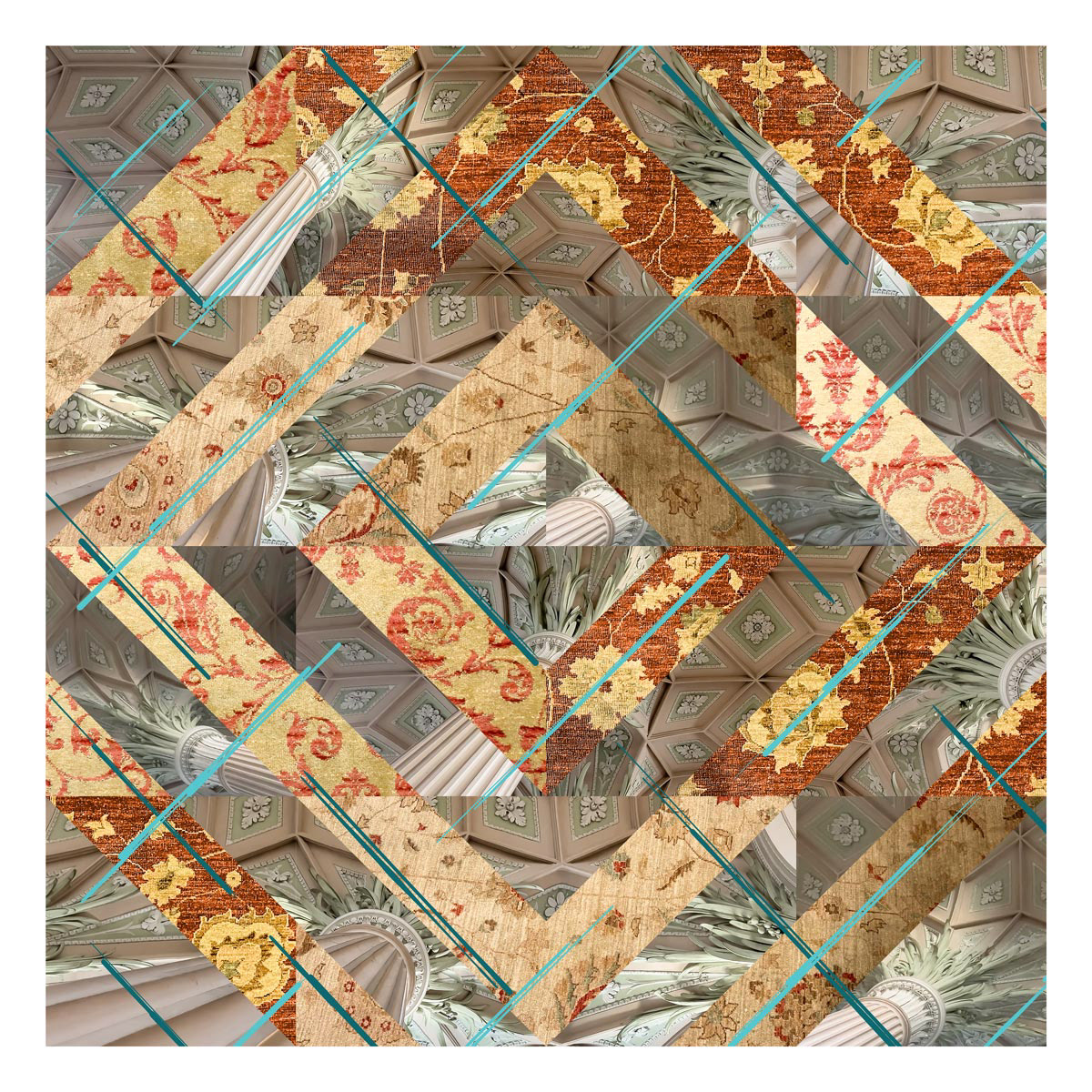
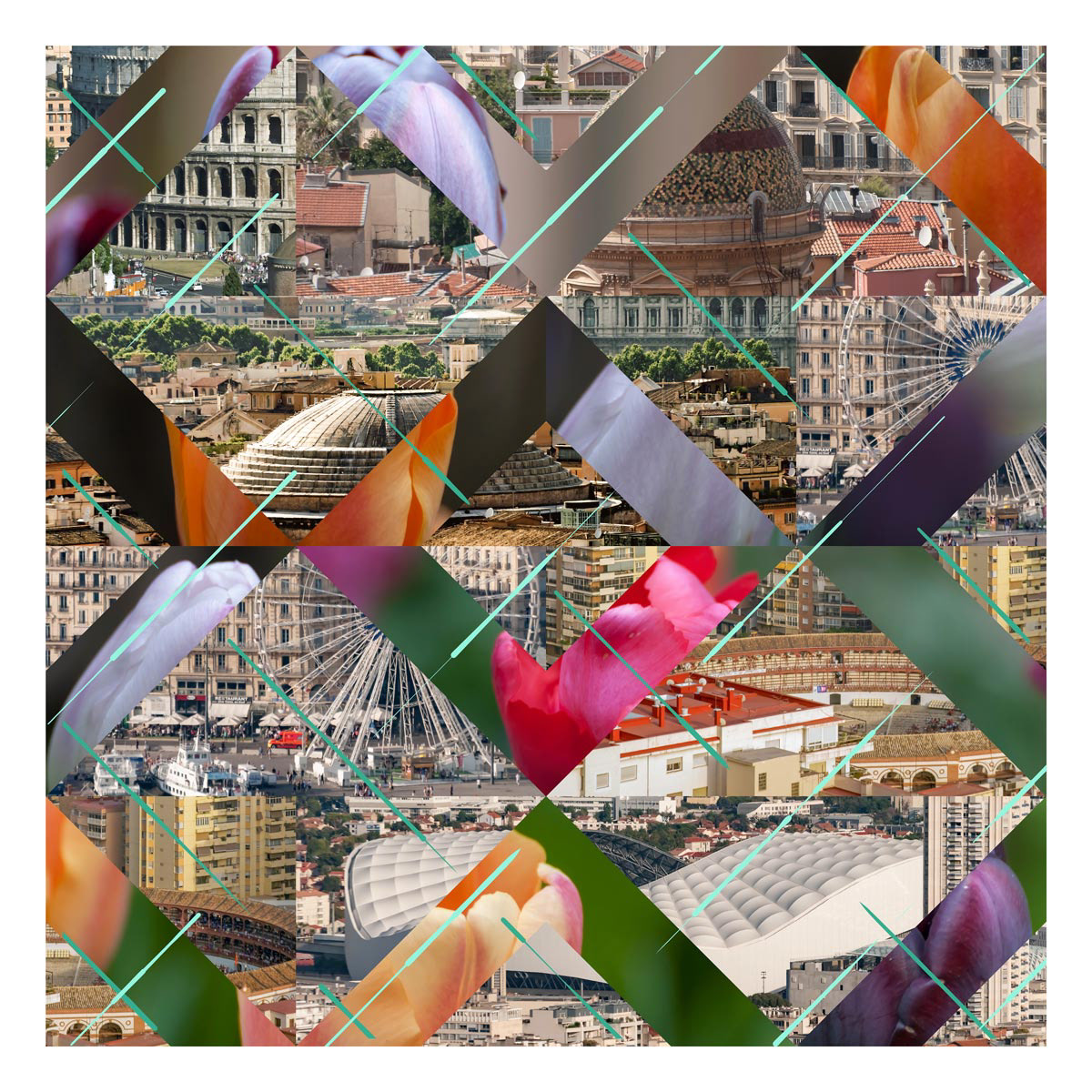
The nine episodes of in retrospect work with superimposed image pairs and serial composition principles. Four of the large-format season scripts are presented as examples for the web presentation. Each Episode is accompanied by a text that deals with the places of origin of the pictorial material – between personal memory, cultural-historical categorisation and topographical research.
Episode One opens with the view from an aeroplane over China (July 2008) onto rose petals in Westbroekpark Den Haag (July 2021). High-gloss water surfaces and industrial terrain from 12,000 metres contrast with the intimate close-up view of a rose garden. Distance and proximity,
The technical grid and natural bloom enter into a tense relationship that emphasises the serial structure of the series.
In Episode Three, five architectural locations – in Norway, Scotland, Dordrecht, southern France and on the Rhine – interact with the façade of the Harpa concert hall in Reykjavik. History meets contemporary design. Episode links personal places of remembrance with iconic contemporary architecture – reflecting on tourist overlay, cultural appropriation and the visual memory of spaces.
In Episode Four, perspectives meet: downwards onto the carpet in the Villa Augustus – upwards into the vault of Leipzig's Nikolaikirche. The dialogue between macro and monument thematises humility and grandeur, everyday life and history. With the Nikolaikirche as a place of Bach's music and political change and the recycled carpet as a symbol of poetic sustainability.
To conclude with Episode Nine, in retrospect returns to floral close-ups – this time of tulips from the artist's own garden (April 2017) – and juxtaposes them with city panoramas: Rome, Nice, Marseille, Málaga. Detail and overview alternate, proximity and distance dissolve. The season functions as a visual afterimage of the entire series – an epilogue of light, colour and memory.
In Return – March 2022
The twelve large-format pictorial compositions of In Return follow a musical principle. Each panel is structured like a score, with six "voices" that appear in the visual language as staggered layers – visual layers that relate to each other rhythmically, melodically and in terms of tonal colour.
The basic structure is created from eight opposing strips of images – doubled, mirrored, related in colour. A narrow strip is inserted between them as a rhythmic entry: four times identical, from a contrasting thematic field. Above this is an ornamental pattern of lines inspired by early bridge sculptures. A diagonal veil of colour softens the overlaps – from a pastel-coloured beginning to a transparent dissolution. Three diagonals act as a counterpoint, their orientation changing from picture to picture in 15° increments. A final, sixth layer covers the whole with a digital shading – occasionally painted over in oil.
In turn, there is a visual echo of musical composition. Each of the twelve scores is dedicated to a contemporary composer – including Glenn Branca, Sofia Gubaidulina, Philip Glass, Pauline Oliveros, Steve Reich, Meredith Monk and Missy Mazzoli.
Each score measures 210×200cm and is realised in three formats: as a wall-filling digital print on fleece, as a medium format behind acrylic glass (80×76cm) and as a paper print in a smaller format (40×38cm).
In addition, all scores are divided into twelve equal segments (70×50cm). These 144 image sections are recombined to create nine "trailers", each with sixteen sheets from different scores. This creates serial re-compositions with their own rhythm, transverse to the original sequence.
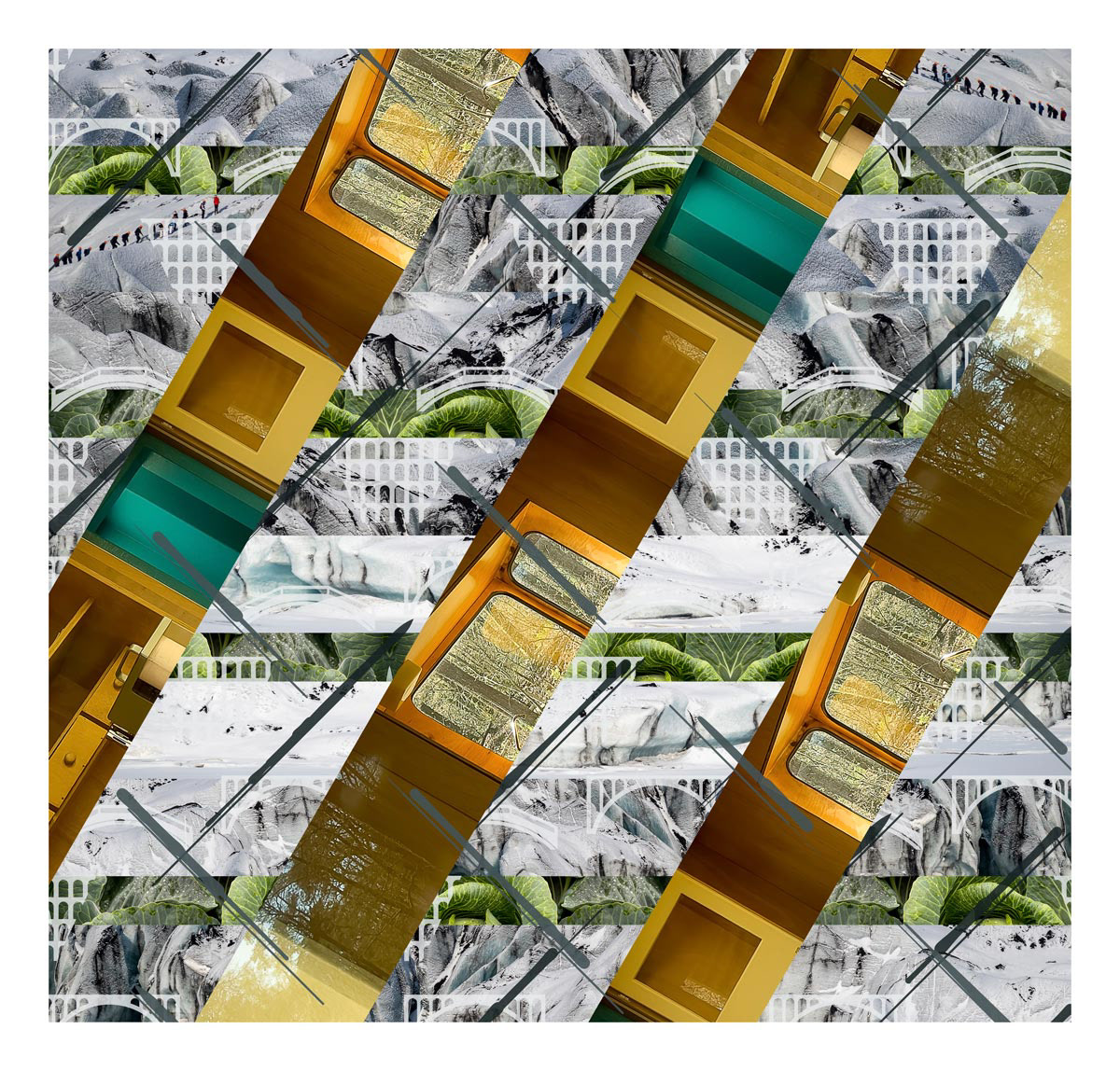
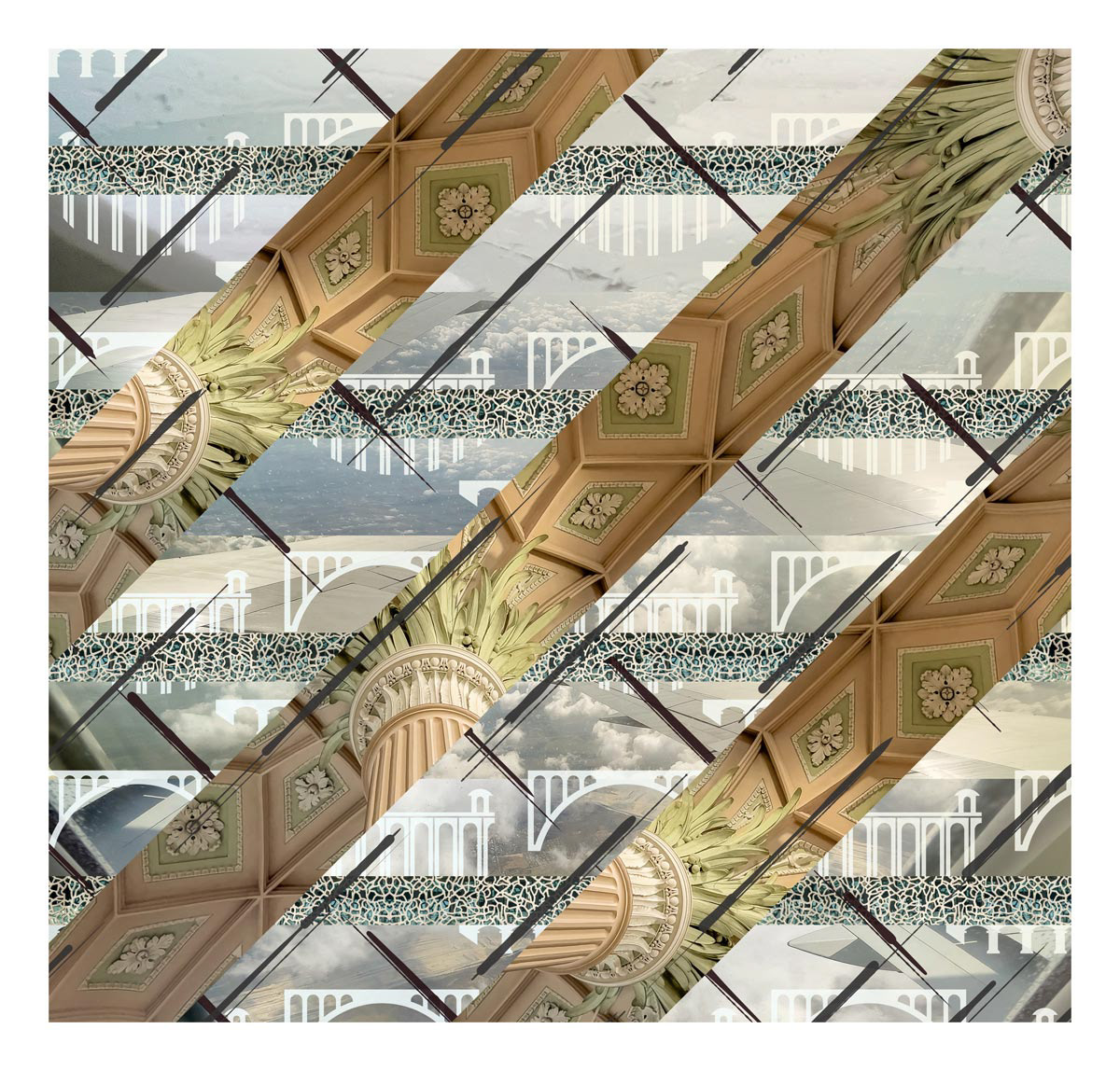
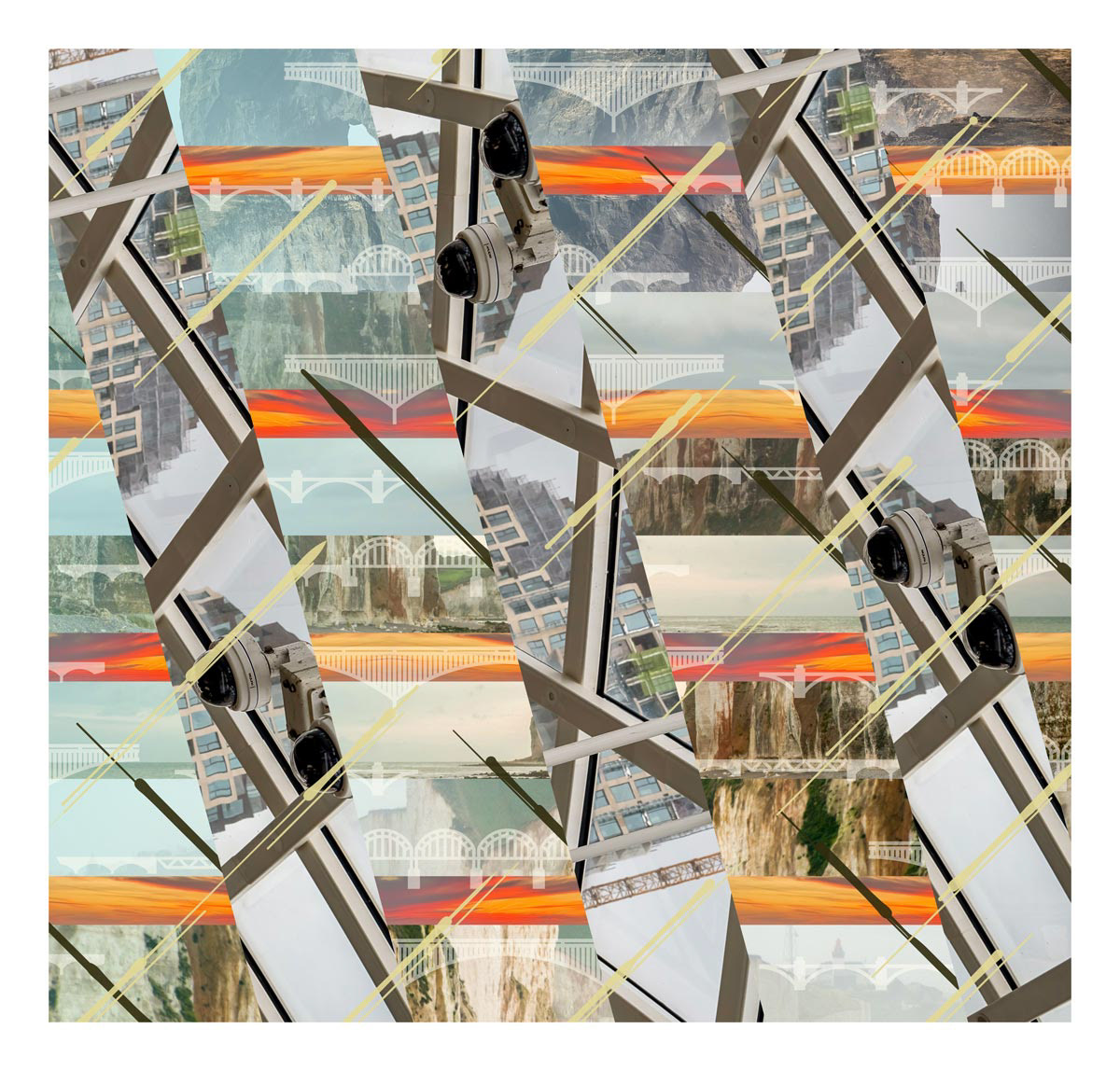
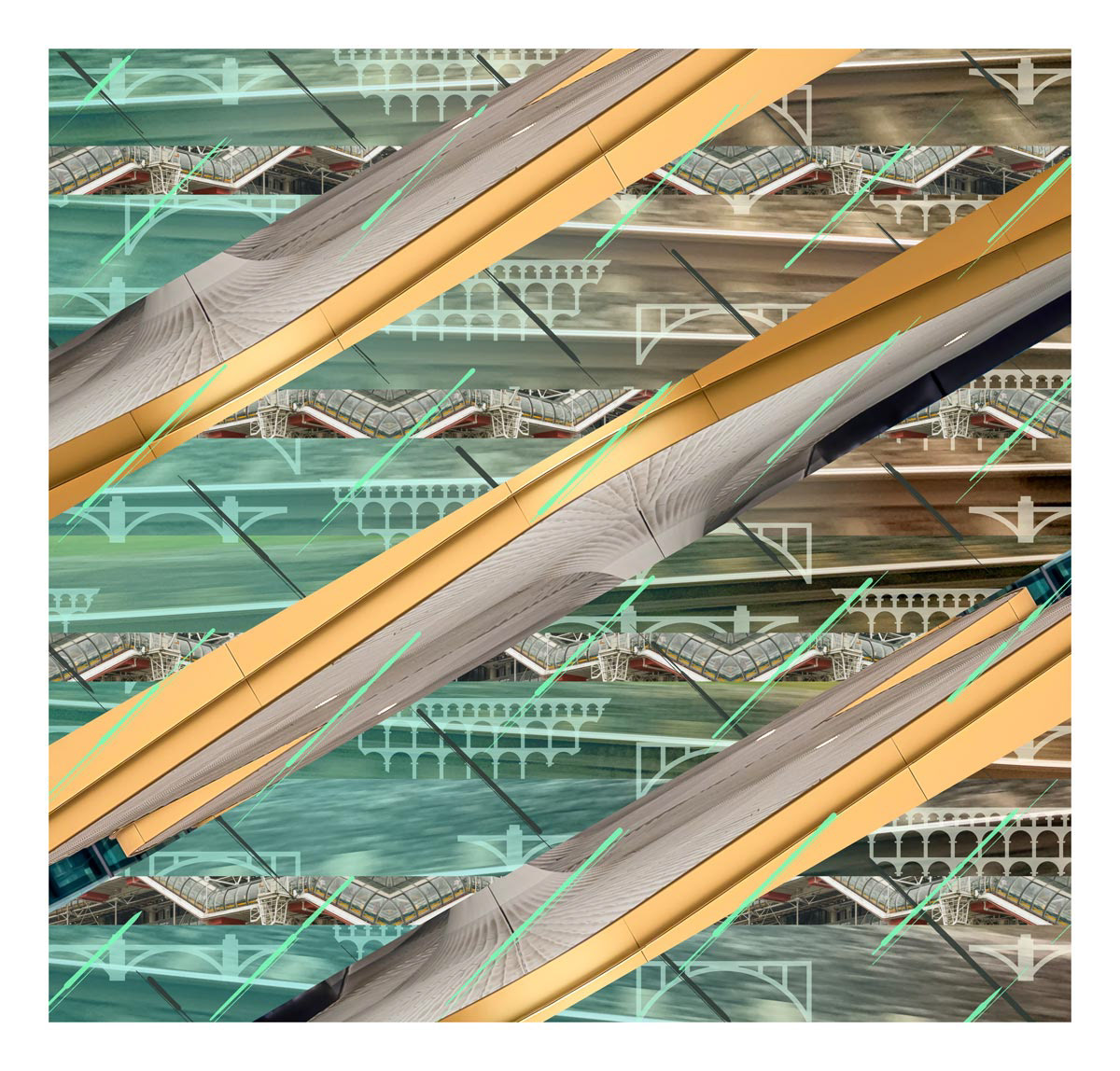
Score Two
My first encounter with Errollyn Wallen was not in the concert hall, but in the exhibition hall – as part of Sonia Boyce's contribution to the Venice Biennale. Wallen's music, her presence, her ottenness for collective processes immediately appealed to me. The visual score picks up on this polyphonic approach: melting glaciers step onto vegetable fields in Dordrecht, imaginary bridge drawings float above, a warm veil of yellow, a caravan by Joep van Lieshout's caravan and a structuring shadow. Like Wallen's music, this picture is tense between improvisation and formal precision.
Score Three
I have experienced Karlheinz Stockhausen's music several times – in Paris, Vienna and most recently in Kürten. The monumental sound architecture, the proximity to astrology, esotericism and technology fascinates and irritates at the same time. In the score, aerial shots of an approach to Iceland meet the perforated concrete skin of the MuCEM in Marseille. In between: Bridge motif, light-coloured veil, view into the vault of Leipzig's Nikolaikirche – a place of political change and musical history. A digital shading completes the picture – between cosmic order and concrete upheaval.
Score Eight
My first John Adams CD: Shaker Loops. Later Nixon in China, The Death of Klinghoffer – music that not only composes, but also narrates, interferes. The visual composition continues this idea: Normandy cliffs as a symbol of liberation, sunsets over The Hague as personal spaces of light. A digital bridge connects the two. Above: blue veil, railway station roof with surveillance cameras, digital shadows. A score that visually condenses history, everyday life and sound rhythm.
Score Twelve
I heard Missy Mazzoli for the first time in Reykjavík – her piece Sinfonia (for Orbiting Spheres) was part of an impressive concert evening at Dark Music Days. Her music interweaves emotion and structure, classical orchestra and electronic soundscapes. The visual score also seeks this connection: tracks between Utrecht and The Hague, the escalator of the Centre Pompidou, a floating bridge sketch, a turquoise veil, a canopy in front of the Dutch parliament and a digital shadow as the final accent. Mazzoli's score forms the conclusion of the series – as both a reflection and an outlook.
All twelve scores – including the detailed texts on the composers – can be found in the book of the same name In Return, which is available from the shop.
In good faith – November 2022
The series In Good Faith consists of 54 large-format pictures, divided into three acts with 18 scenes each. Each picture is based on kaleidoscopically rotated sections and a system of rotating bands of images superimposed over floral and geometric patterns. The series is complemented by a "trailer version" of 486 image sections that circulate in new combinations.
Formally, the series is strictly structured, thematically it reacts to current events: Three accompanying texts explore global dependencies (Curatorial Twilight), the role of exhibitions and curators (Kuratorendämmerung) and the growing influence of authoritarian systems (The Rise of Autocracies).
Two of the texts were created in the form of conversations with an AI – an experimental format that also makes ethical and political questions about the use of artificial intelligence visible. The image-text combination does not follow an illustration, but reflects parallel movements of thought: The thoughts detach themselves from the visible and sharpen the view by digressing.
All 54 scenes are available in three formats: 120× 120cm as non-woven wallpaper, 80× 80cm printed behind acrylic glass and 40 × 40cm as a digital print on paper. If you are interested in purchasing, please use the contact form. You can find non-binding guide prices in the shop.
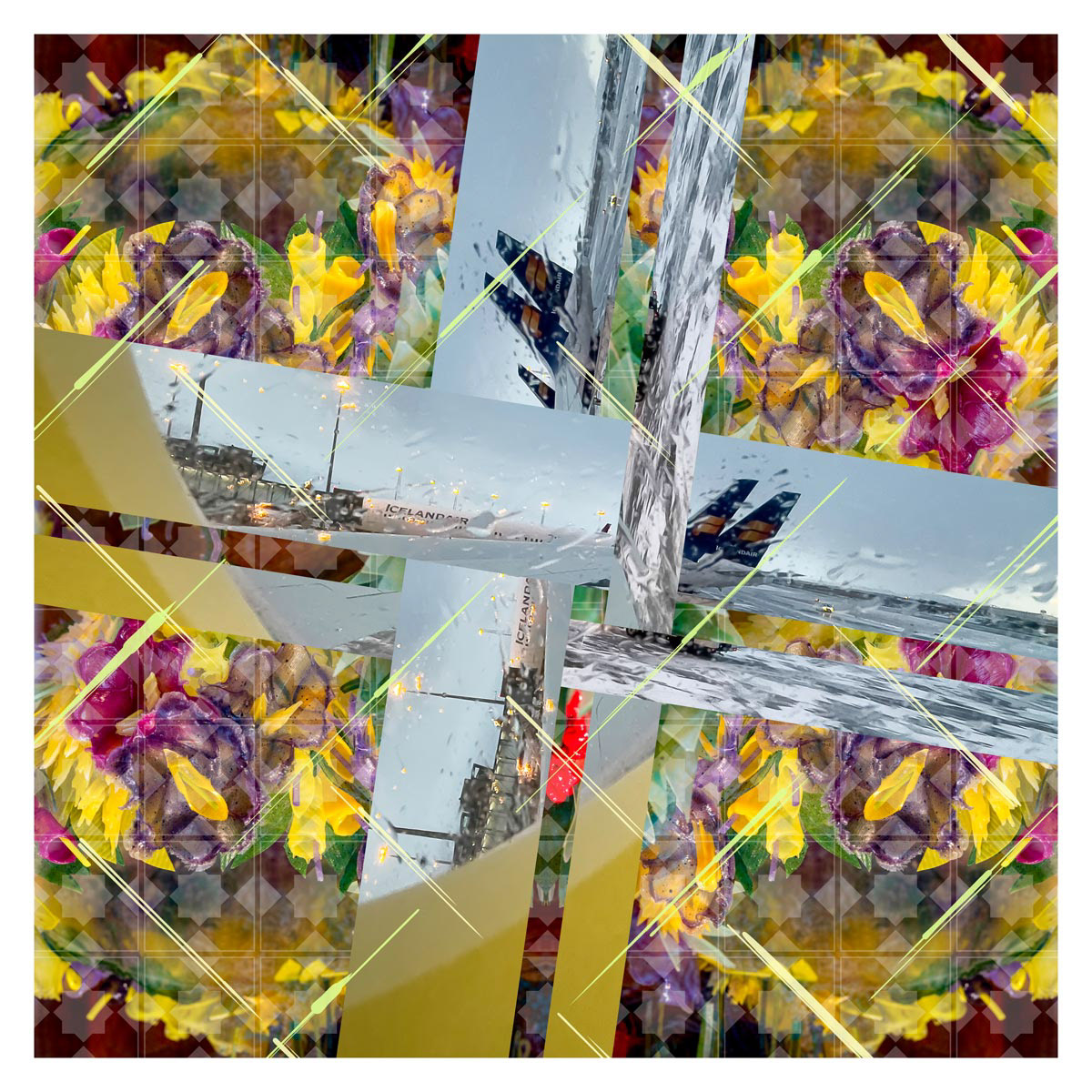
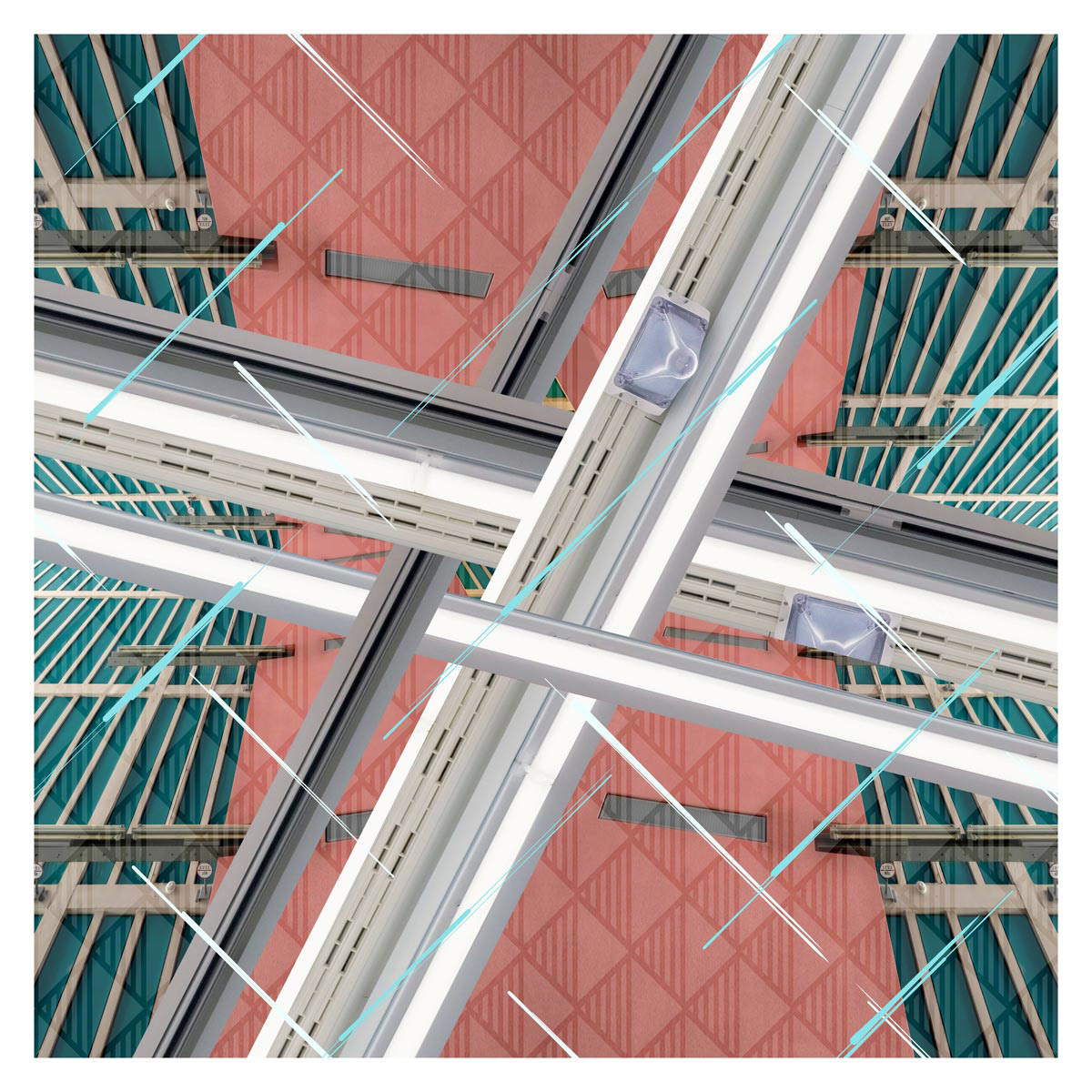
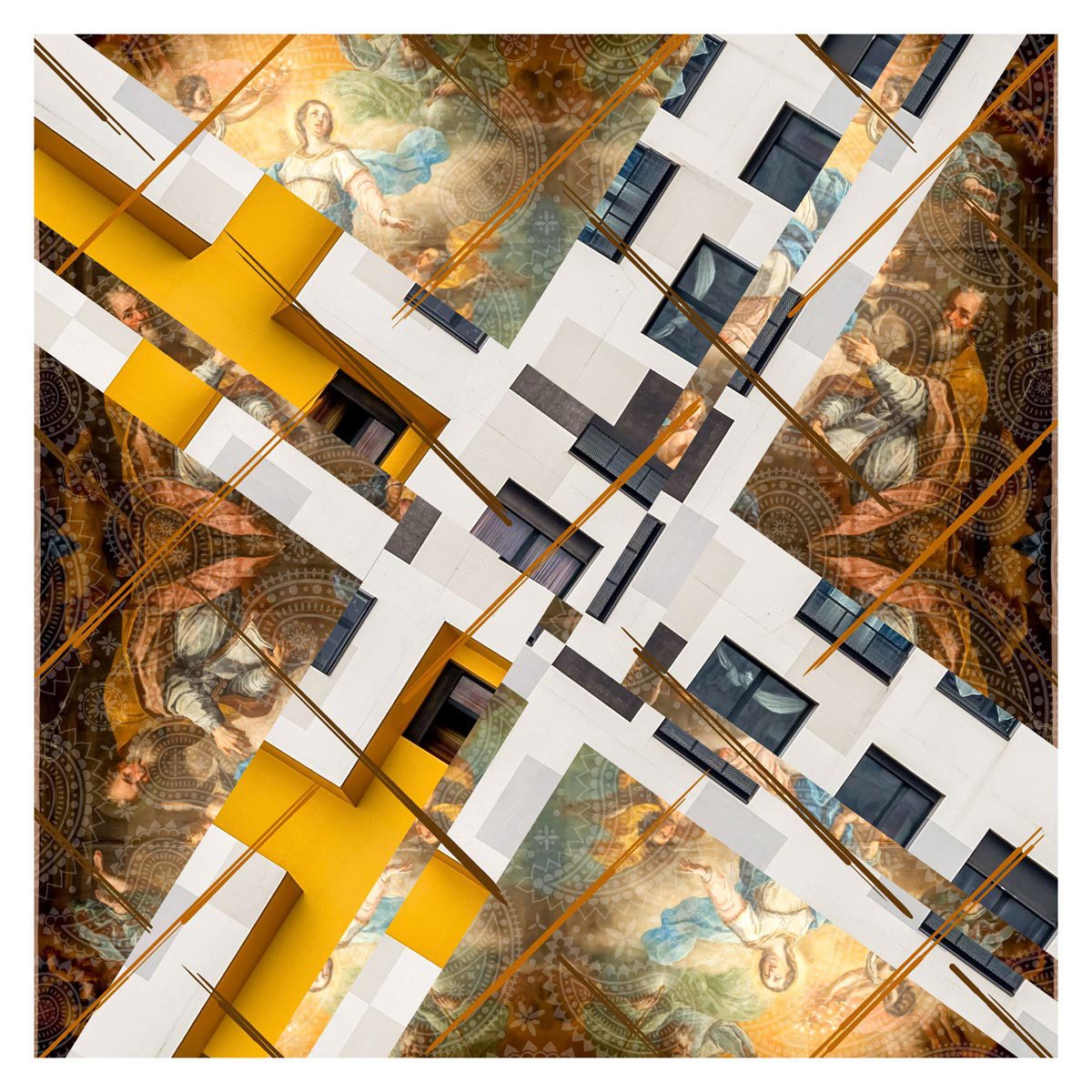
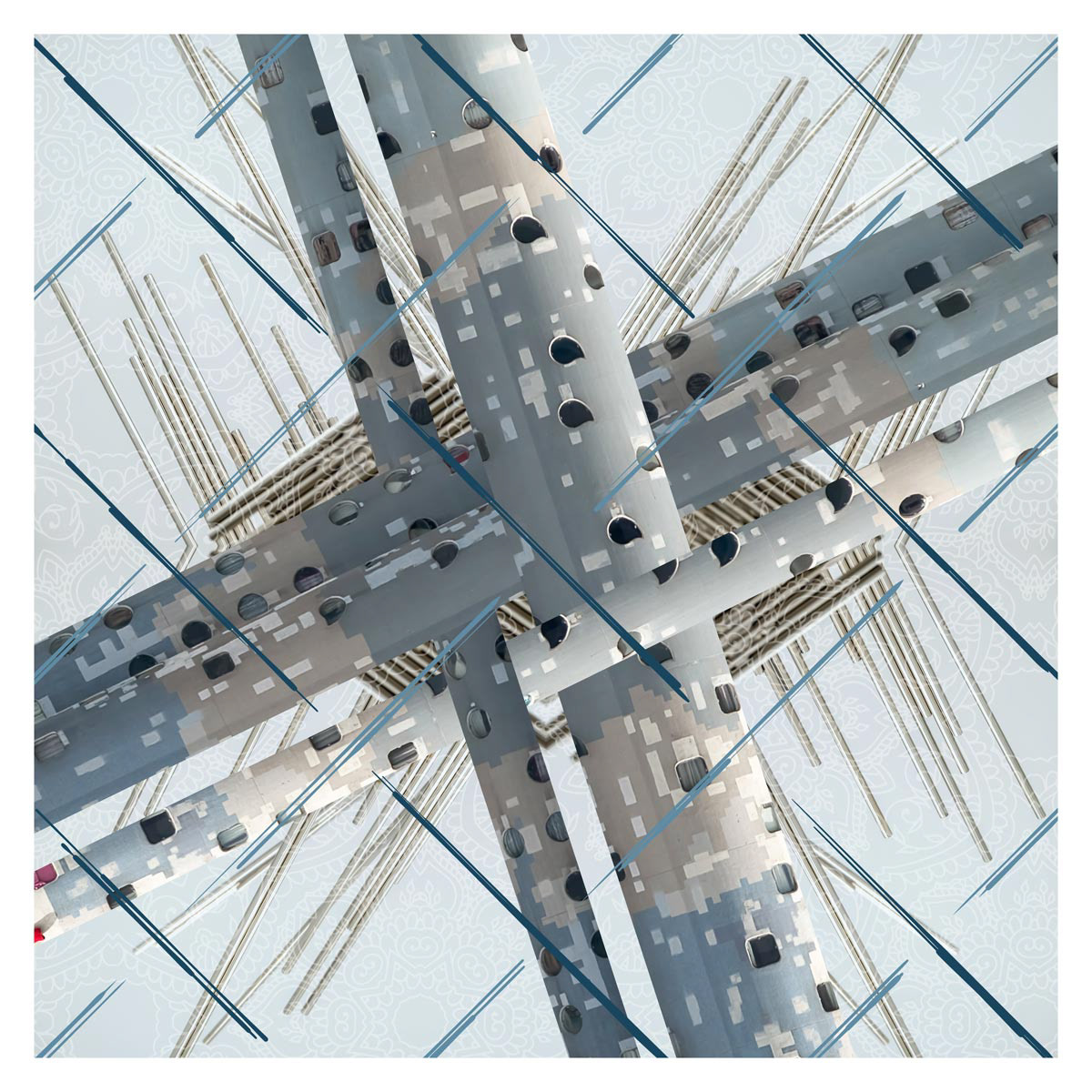
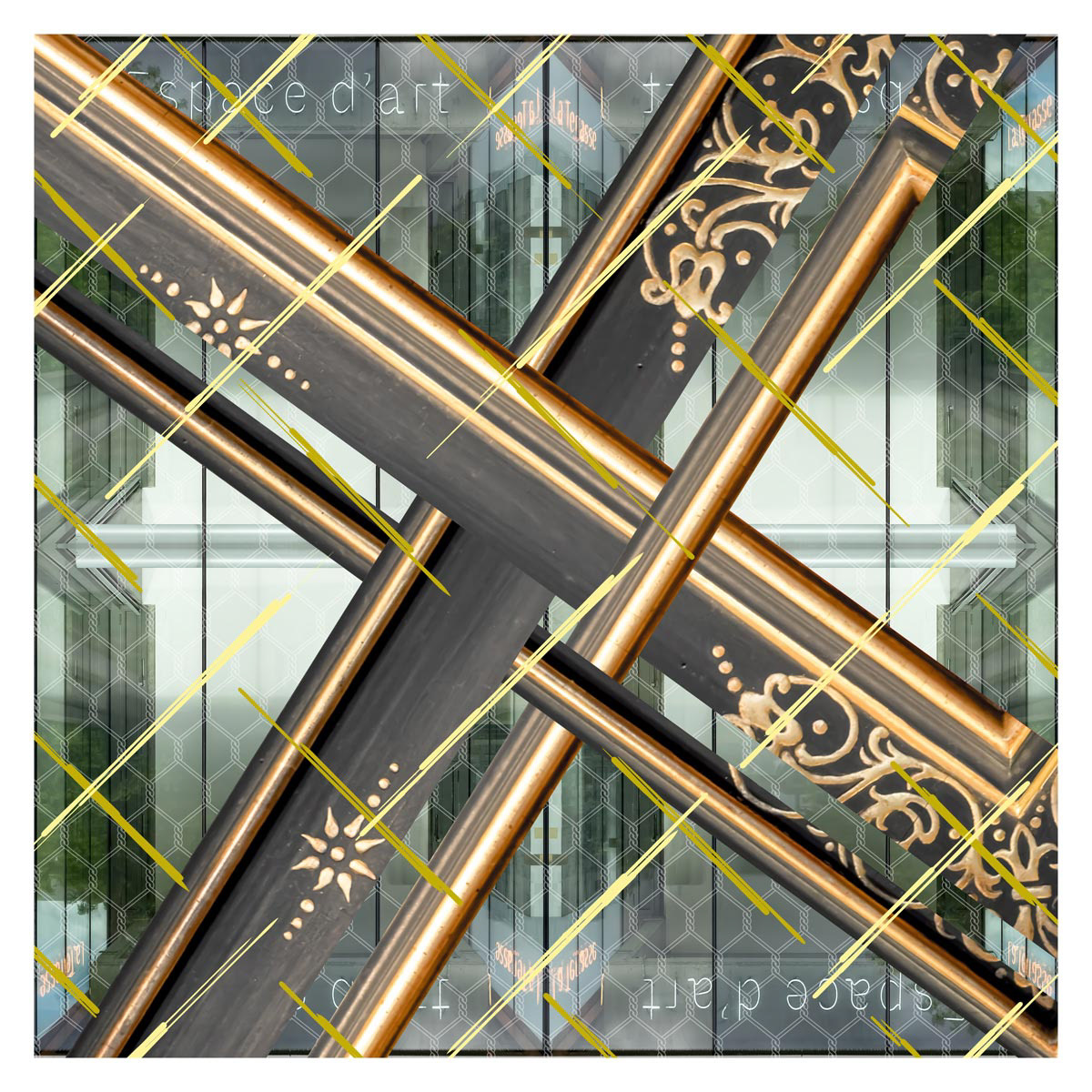
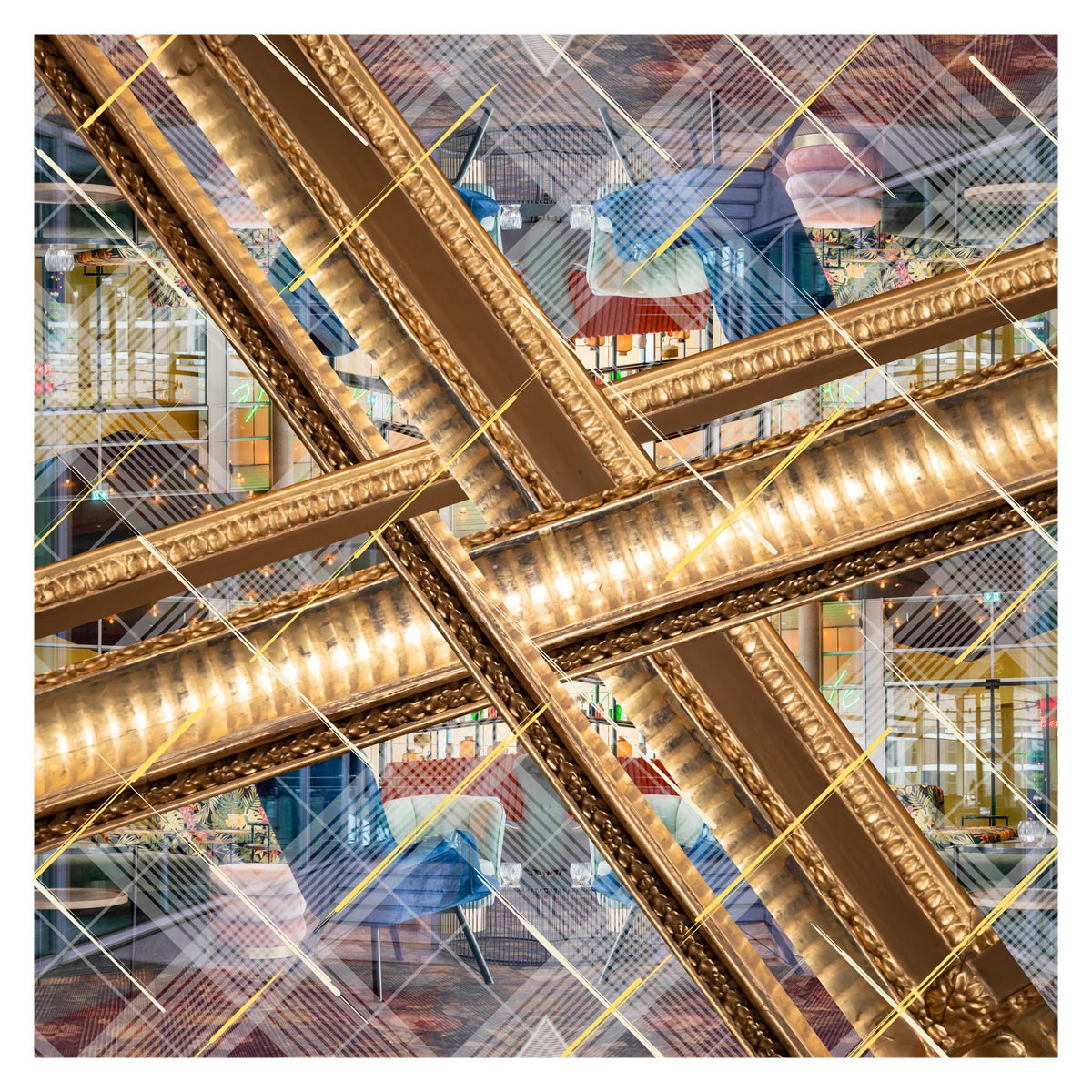
In Good Faith juxtaposes three image cycles with texts that deal with social shifts in our present. The texts do not explain the images, but create an independent line of thought – partly as an AI-supported dialogue, partly as a freely written reflection.
The first act begins with a conversation about globalisation, war and responsibility – triggered by the Russian attack on Ukraine. It is about power shifts, dependencies, colonial continuities and possible alternatives such as degrowth or the economy for the common good. The AI systematises, the artist questions.
The second text examines the transformation of curatorial practice in the field of tension between representation, symbolic politics and participation. It takes a particularly critical look at documenta fifteen (2022): Its collectively organised, anti-authoritarian approach failed due to a lack of discourse and a naive approach to responsibility. This text is based on his own research – as a personal, critically distanced analysis.
The third act is another AI discussion – this time on the global rise of authoritarian regimes. Causes such as economic inequality, digital surveillance and the dwindling support for democratic procedures are discussed. The AI argues, the artist seeks friction.
An epilogue reflects on why the texts became part of this project. They are not analyses or essays, but rather otten protocols of thought – prompted by current events, artistic processes and the artist's own doubts. In the spirit of Claire Bishop, the project advocates an attitude of research that does not explain, but thinks ahead.
All complete texts and image series are collected in the book Verhaltensmuster, available in the shop.